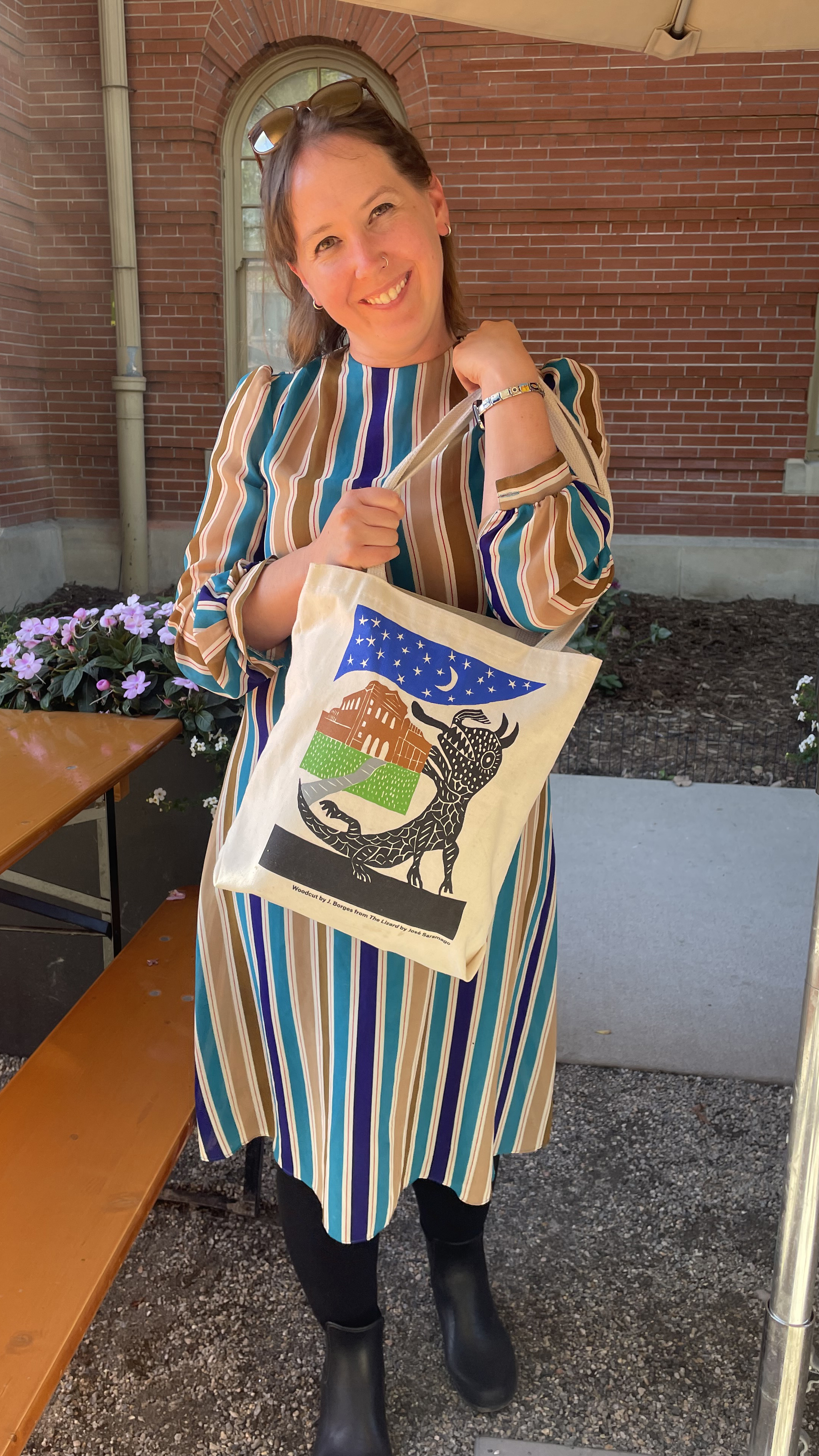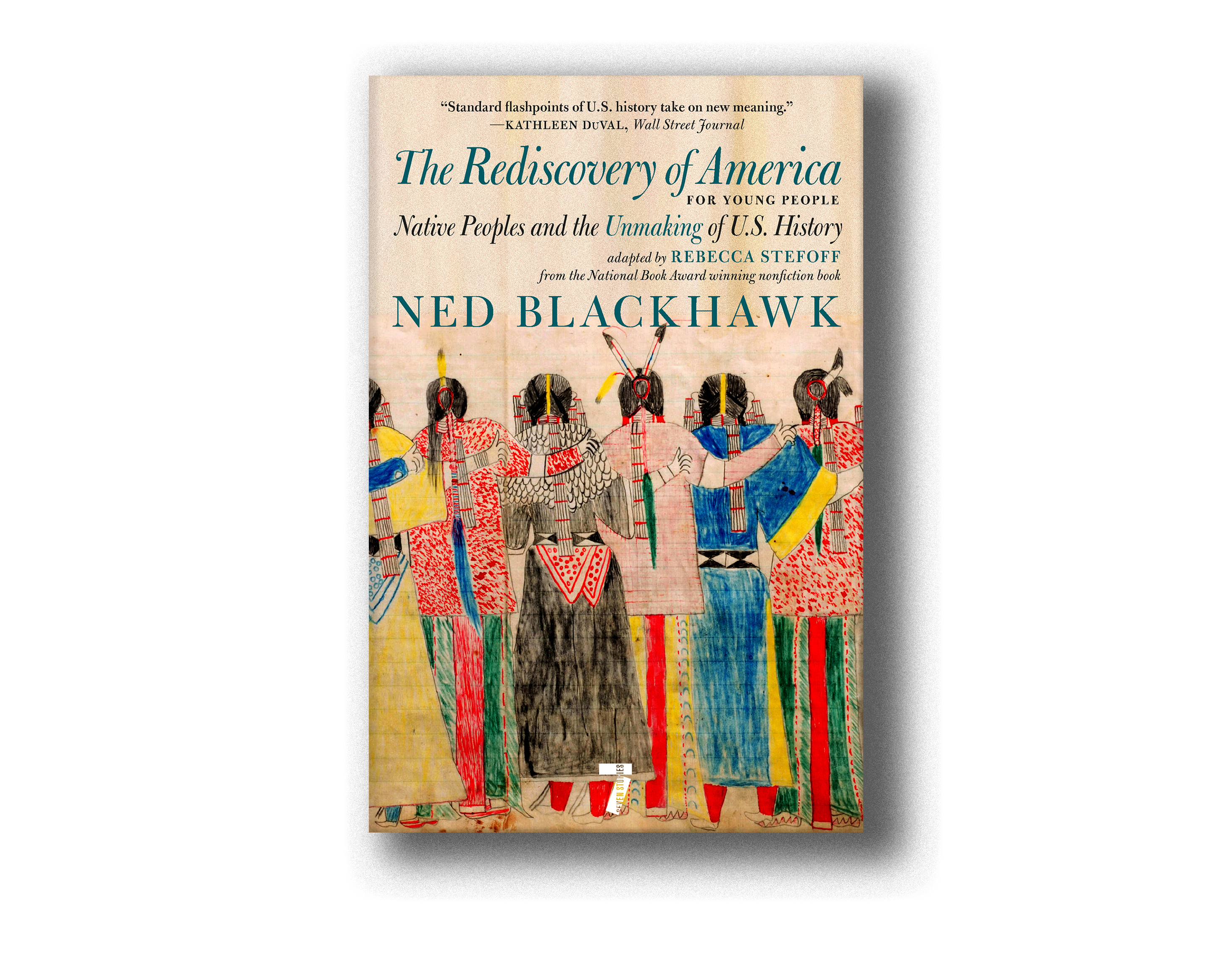The Price of the Ticket
by Kia Corthron
Originally published in the July/August 2016 issue of The Dramatist
Three years ago I was standing in the lobby of a theater, the typical Broadway cluster-mob awaiting entrance, with more than half the horde African-American. This would be logical, as the show was the musical revue After Midnight, a refurbishing of a prior concert piece entitled Cotton Club Parade celebrating Ellington-era jazz and dance. Inside, my sister and I were led to our orchestra seats, and I looked around: not another black face in sight. It took me a moment to realize that The Mystery of the Vanishing Black Folks likely would have been quickly resolved had we moved up to the balconies. But from where I sat, observing the complexion of the performers versus that of the onlookers, it was the Cotton Club, the Colors entertaining the Caucasians, and that the upper tiers may have been filled with black faces was not exactly comforting, an economically induced throwback to Jim Crow segregation with African Americans relegated to the peanut gallery.
My own excellent seats were a privilege bestowed by the Tony committee, as I am a voter. Before this era of my life commenced seven years back, the shows I regularly attended always boasted at least one “off-” before “Broadway,” sometimes years going by before I took in a single performance in any Midtown house sporting a marquee—and when such a rare event did manifest itself, invariably my head would practically graze the ceiling as I peered down on the scalps of the actors from the heavens.
Of course with the most financially successful Broadway shows, even the nosebleed seats are out of range for any but the affluent—or, alternatively, a working-class person may save up all year for the one show she has chosen for the current season. We may jump to the conclusion that this person was drawn in by the glitz of a particular production and otherwise would have had no interest in theater, but this assessment does not take into account the elephant-in-the-room reality of how, for those of us getting by on well under six figures (including most theater artists), a major factor is triple-digit ticket prices, and off-Broadway and regional seats are nearing that level. I borrowed the title of this article from the James Baldwin anthology, his essays on race issues including segregation: different from the themes of this discussion, and not.
A brief, jaw-dropping history of Broadway ticket prices:
Season Orchestra Balcony
1945-1946 $3.60 to $6.00 $2.40 to $3.00
1955-1956 $4.90* $2.30
1965-1966 $6.25 to $7.50 $2.85 to $3.80
1975-1976 $15.00 $7.00
These figures are consistent with Stephen Schwartz’s recollection:
In 1973, when the producer of Pippin, Stuart Ostrow, told me he was planning to raise the top ticket price to $12, I remember how horrified I was, thinking no one would pay over $10 to see a show. (The top price had been $9.90.) Cute and quaint as this story is, it also illustrates how much beyond inflation the rise in Broadway ticket prices has been: If one simply followed the inflation rate, the top price should now be around $75—still a hefty boost, but nowhere near what has actually transpired.
In fact, $75 is now the bottom-tierprice of some Manhattan off-Broadway mainstages, and there are even second-stage seats that go for more. Given the frequency of Hollywood personalities appearing on (or writing for) the non-profit stage, Derek Thompson’s words about Broadway in The Atlantic are instructive at both levels: “Producers have gotten wise to the idea that rich people are extremely price insensitive when it comes to seeing celebrities on the Great White Way, especially if there's only a short window. The message rich people appear to be sending is: If you charge it, we will pay it.”
Jeanie O’Hare relocated from London in 2012 to assume the chair of the Yale School of Drama playwriting department. Her previous stints included positions in the lit offices of the Royal Court Theatre, Hampstead Theatre, and most recently seven seasons as Company Dramaturg at the Royal Shakespeare Company. She relayed to me her experience as a new immigrant, taking in a show at a renowned off-Broadway dedicated to new work:
I could not get over the disconnect between the people on stage and the people in the audience. The woman beside me didn’t understand a word of the play but dutifully stayed to the end. Another woman got on her cell phone at the interval and talked about how she hated the politics of the play and the grimy world of the characters but she too stayed till the end.... I really noticed how well-heeled the audience were. It was a very sophisticated audience, lots of great taste and stealth wealth. I suppose being a leading new writing theatre in New York City, I had expected a Royal Court -type audience, people interested in new plays, lots of actors and writers, a trade audience mixed with the general public. But here was an audience and here was a play and they didn’t match up. This theatre seemed to belong to the audience, not to the play.
Regarding O’Hare’s reference to “stealth wealth.” The rich like to take advantage of a bargain as much as anyone else, and this brings us to the topic of the subscription audience, a uniquely American phenomenon eyed with suspicion by Brits. Karen Hartman, without cheerleading for the system, pointed out some of its advantages: less prominent playwrights like herself benefitting from season subscribers’ attraction to more commercial shows (e.g., next season at Seattle Rep, Hartman’s Roz and Ray will be on the same slate with King Charles III and Here Lies Love); adventurous theatergoers who appreciate the challenge of being presented with something off their radar. On the other hand, if the only way for a potential audience member to get a show discount is to have the means to comfortably pay upfront for the entire season, what does that imply about the audience’s degree of socioeconomic diversity? About its relationship with any one play, since the show came as part of the package whether an individual audience member wanted to see it or not?
Lucy Davies, executive director of the Royal Court Theatre, describes a very different reality in the United Kingdom:
Our funding model has allowed us to avoid the U.S. subscription model, but I don’t think it would ever happen here, conceptually, because access and diversity are such guiding principles of cultural policy.
The government underpins us instead—with philanthropy/sponsorship and ticket income matching that government money. Most of us, especially in London, do offer membership schemes where a small annual donation allows you to get priority booking. At some theatres this acts a bit like a subscription because the theatres are small enough that members can buy up nearly all the seats, leaving very little for public sale. But whereas this is the norm in New York, it makes cultural leaders here in the U.K. very uneasy.
Being accessible to the widest possible audience is absolutely at the core of not-for-profit (and, increasingly, commercial) theatre-making. Feeling like a club, with a locked-down audience, would be very culturally stifling and uncomfortable for us. Similarly, we all work really hard to keep our pricing as low as possible, especially for under 26s, and try to peg our lowest prices to things like cinema tickets—so that theatregoing can be a really viable, open, possible choice for a young person and their budget. This feels a really essential imperative for all of us in the arts in the U.K., and the government has just issued a white paper which has this notion of great art accessible to all at its heart.
Because all of the work we do [at the Royal Court] is new, and about now, and because we produce so much each year, our programme can feel very vital, very international and very diverse and our audiences reflect that. With a top price of £35, and all tickets on Mondays at £10, we really use our government subsidy to offset the cost of coming here to see a play. It is getting harder to function in this funding environment, and we have to creep prices up every couple of years—the costs of producing grow year on year, and our model is feeling really pinched. But this principle of equality of access versus elitism/privilege is really enshrined in the arts here, even under a Tory government.
Instead of subscription, I do think fundraising is starting to shift a little here: we now see all our audience members as potential philanthropists, not just the wealthy. It’s normal now to have a voluntary donation of £1-£3 on top of a ticket price, and with crowdfunding models becoming commonplace, strategies are shifting to encourage people to give even at tiny levels. Meanwhile, everyone makes the economic case for subsidy as “investment”—there has been lots of maths to prove that every £1 invested in the arts yields another £3 of economic wealth. So the flow between the subsidised and commercial sector, and the way we generate talent that ends up making blockbuster movies, and the way we “export” our cultural brilliance around the world are all the ways the value of subsidy is proven in the public imagination.
As subscription is the model for mainstream American non-profits, the next question is how this affects play selection: the comfort level of artistic directors regarding risk-taking. Jeanie O’Hare finds the subscription system antithetical to creative vibrancy: “I arrived here four years ago with a prejudice that it does affect programming, that it tips it towards timidity, and I have not yet been dissuaded. The idea that your audience is paying you in advance for the work you are doing sets up an immediate indebtedness to them.” (She believes an even larger contributor to lethargy in season planning is that Americans regard an artistic director as something like a CEO, potentially serving till retirement, whereas U.K. artistic directorships are rotating positions, with terms limited to ten years—but that would be the subject of another essay.) On Broadway, the need to justify astronomical ticket prices, not surprisingly, has restrained producers’ willingness to be daring, as Stephen Schwartz notes:
Broadway, which used to be the first step for new theater, has now become the last—for the most part, only shows which have proven themselves elsewhere (particularly if they have been given the imprimatur of the New York Times in a regional, London, or not-for-profit production) get produced. I suppose that's not necessarily a bad thing; it's just different than when I started working on Broadway. It's hard for me to believe a show like Pippin would have gotten produced these days—no stars, unknown writers, and a negative review from the Times.
In the regions, Jeanie O’Hare has spoken interestingly of the deleterious effect on the work incited by a subscription audience by virtue of its spotty attendance record. Some patrons consider their memberships to be a charitable donation: they can feel good about their philanthropy while believing they are not under any obligation to actually fill the seats they’ve purchased, skipping shows that appear less desirable. This is problematic, as O’Hare expresses, because “if a box office sells tickets they can pack the room in the right way knowing that an audience needs to huddle together. The best seats are always in the middle of that huddle. If subscribers don’t turn up they are scattering the audience in a way that impacts on the dynamics of the room.”
Signature Theatre in New York, which subsidizes every regular season seat, shifts the paradigm against the resigned acceptance of mainstream theater as an upscale entitlement. In 2005 founder Jim Houghton approached Time Warner about underwriting each ticket so that, in honor of the institution’s 15th anniversary, every seat would cost the buyer $15. (The donation covers the full run of the show. In the case of extensions, admission price assumes the market rate.) This first phase of the initiative lasted two seasons, followed by four seasons of $20 tickets. In 2012 Signature opened its stunning Pershing Square Center (upgrading from one proscenium stage to three unique performance spaces) with $25 seats, and beginning next season through the 30th anniversary tickets will be $30. Consistently, over 83% of seats are sold (compared with the 73% national average), and more than half of the Signature audience has stated it was aware of the ticket initiative, with 71% of these claiming the initiative has had an impact on the frequency of their theatergoing.
Unlike other subscription plans that, by definition, require the potential audience member to shell out a large sum for the entire season in advance, Signature’s “Pay Along the Way” program, as described by Associate Artistic Director Beth Whitaker, allows subscribers to pay over the course of the season through a flexible payment plan, recognizing that, even at such a low price point, ticket cost remains a barrier to subscribing to a season for many of our constituents. With this program we have expanded our traditional marketing efforts to include grassroots approaches in neighborhoods not traditionally targeted, including East Harlem, Washington Heights, Bed-Stuy, Bushwick, Crown Heights, Flushing and Sunnyside. Advertisements in languages specific to the targeted neighborhoods have been created… Eighty-seven percent of Pay Along the Way subscribers have a household income under $100,000, versus 59% of regular subscribers, and we saw a 150% increase in enrollment in this program this year.
Of course plenty of us fall well under six figures, some feeling very lucky to hit $40K in a year. The data provide less clarity at these levels, though it is notable that the most recent stats demonstrate that 19% of the seats are filled by first-time Signature attendees, and 18% by those who identify as persons of color. This number is still dreadfully low in terms of reflecting the populace, given that 56% of New York City is nonwhite. Still, gazing out into a typical non-profit audience—the great sea of Caucasian ticket-holders—it’s difficult to imagine any other off-Broadway or regional where one out of every five seats is filled by someone of a darker hue.
The November/December issue of The Dramatist was dedicated to "The Count", a superb visionary study of parity (or, more accurately, the lack thereof) with respect to produced playwrights, in terms of ethnicity and, in particular, gender. A sampling of ten select cities illuminated that Chicago was the unequivocal winner in both categories, with 36% of produced plays written by women (by comparison, New York at 25% was in sixth place) and 28.4% by writers of color (beating second-place Washington, D.C., by almost ten points, with New York ranking a disappointing seventh at 15.7%).
In the fall of 1996, very early in my career, the Goodman Theatre produced my Seeking the Genesis on their second stage—a play featuring several African-American actors written by an African-American playwright. As curtain time of my first preview approached, it’s ludicrous to think how startled I was to comprehend the number of black faces taking seats in this mainstream venue, certainly a greater portion than I’d ever glimpsed in my New York off-Broadway theatergoing. I contributed this favorable state of affairs to the Goodman’s longtime commitment to artists of color as artistic associates, not just in development but consistently producing their work, including African-American director Chuck Smith and actress-playwright Regina Taylor (reflecting The Count’s high Chicago scores for nonwhite and, in the case of Taylor, female playwrights). Certainly the visibility of such artists was a huge factor, but at the time I hadn’t considered admission price. According to Jenny Gargaro, Goodman Associate Director of Marketing and Research, a sample of the general public was asked about the drawing power of various marketing strategies in attracting an audience to an unknown show and, unsurprisingly, the most frequently cited response by far (73%) was “getting access to half-price tickets.” Looking at current rates, a ticket for the mainstage Albert runs an unremarkable $46 to $100, but for the 450-seat Owen (the second stage was an intimate black box back in the ’90s), main floor seats are $30, mezzanine $25, and a balcony seat an astounding bargain-basement ten bucks.
How does a major American LORT manage such a deal, sans the benefit of the type of government subsidies enjoyed by a British institution? Tanya Palmer, the Goodman’s Director of New Play Development, speaks of the theater’s “dynamic pricing” model, allowing ticket price to fluctuate according to demand. This caused some public admonishment when fees soared for War Paint, a musical to be produced this summer. On the other hand, based on inventory, tickets for other shows are sold at $30 for the mainstage and the aforementioned tenspot for the Owen. Palmer explained the institution’s management philosophy:
It's preferable (both for the artists and for word-of-mouth about the show) to have fuller houses, even if that means heavily discounting tickets, than it is to maintain a high ticket price. We also are concerned with bringing in a diverse audience (in terms of age, socioeconomic status, race, gender, region, etc.)… Specifically with the Owen we purposely price the tickets quite low because we often are doing new plays by relatively unknown writers in that space. Part of our goal with the work we do in there is to attract a younger, more diverse audience, and we know that high ticket prices can be an obstacle to bringing in those audiences, particularly audiences who are not regular theatergoers, or are not frequenters of the Goodman, and who are going to be resistant to making a big investment in something that they don't know much about. We also have a lot of discounts for students, again because we want to engage a young audience, and because we see ourselves as not just a theater, but as a community organization that is there to serve the community, and as such we need to make our work accessible to as many members of that community as we can.
The ventures undertaken by Signature and the Goodman illustrate what is possible. And necessary: How can early-career artists hone their craft, and how can all artists keep abreast of the changes in our field, if we cannot financially afford to partake in the fruits of our colleagues’ labor? It bears clarifying that I do not wish to dismiss all the brilliant work going on in the fringe, where the vast majority of seats are modestly priced, if not free. But the experience of a theatergoer, and certainly a theater artist, is enriched by engaging in stagecraft at all levels. There are wonderful ticket discount programs sponsored by Theatre Development Fund, Theater Mania, and others; there are the occasional invite-only paperings; and for those of us who have the flexibility to take a day off work, there are rush lines and lotteries. But these opportunities arise based on ticket availability after full-price sales. Remember Jeanie O’Hare’s reference to a “trade audience mixed with the general public”? In the U.K. it goes without saying that audiences customarily consist of a visible proportion of theater artists. A definitively mixed audience, one that would routinely consist of a fur coat seated next to a struggling playwright seated next to a Brooklyn housing project resident would greatly benefit from the interactive diverse communal energy. If such a scenario feels pipe-dream naïve, perhaps it’s only because you’re an American.
I am a woman of color. A writer whose recurrent subject matter is social justice. There is a line of reasoning that would embrace the affluenza epidemic as a vital hurdle, disrupting the comfort of preaching to the choir, providing an opportunity to reach a demographic that otherwise may never have considered the issues expressed in the work and that, if engendered with the political will, might just possess the socioeconomic influence to push society toward change.
But here’s the reality: the status quo is not apt to be challenged by those who benefit from it. Change as a rule erupts from the grassroots, the socioeconomic bottom up. And for writers whose creativity may spring from less political fonts, do we really want theater to be seen as elusive and elitist—something written to serve the well-off and a handful who saved enough over the year to catch a glimpse from the rafters? And the effect on creativity: Do we playwrights want to continue in a vein of being fools performing for the king—the writing itself, subconsciously or not, scrawled to appease a narrow, privileged upper crust even if the outcome is a script that conflicts with the author’s natural instincts and passions?
I am very grateful for the fine view my Tony seats have provided me. (I brought a playwright friend to a show a couple of years ago, someone who’d previously only observed a Broadway stage from those discount seats in the sky, who cried with delight, “Wow—the actors have faces!”) Sitting in the orchestra of After Midnight, the revue I mentioned when I started all this, I was in the midst of a mostly white, mostly affluent audience, a crowd receptive to the performance: frequently charmed, amused when appropriate, occasionally moved—excited for a glimpse into a world of which they were not a part. I can’t help but to think what a different experience I would have had upstairs among other black people who, in addition to all that, would have brought with them a personal historical context to the event, a pride in cultural ownership (and all the inherent pain that ownership implies). What is lost when those audience members who are most culturally connected to the performers are placed farthest away? When a magnetic synergy that could electrify everyone on stage and in the seats is mollified by a partition of economics?
I’m not suggesting that, by desegregating economically discriminatory seats, audience members who are less enthusiastic about the events on stage would be carried along in some ecstatic cult fervor, but rather that the amalgamation of various cultures truly coming together, and not just in the lobby before tickets are taken, would exponentially enhance the experience of all. When at curtain the theater goes dark and we, as one, take in that breath of heightened anticipation, what would happen if the lights bumped back up and we found ourselves in the midst of people of every race and ethnicity and age and socioeconomic status? Then theater would have done what it can do best: calling us all together into one space to share a live event—a dynamic, unpredictable, charged interaction between performers on stage and an audience that brings with it a myriad of backgrounds and traditions and histories, and thus leaving us all the more richer.
Sources:
A brief, jaw-dropping history of Broadway ticket prices: Broadway Time Capsule (https://peterhilliard.wordpress.com/category/broadway-time-capsule/).
Derek Thompson’s words: “How Did Broadway Tickets Get So Expensive? Blame the 1%.” The Atlantic, June 11, 2012.
Chicago was the unequivocal winner: “The Count,” The Dramatist, Nov./Dec. 2016, p. 28.







 British-Egyptian writer Alaa Abd el-Fattah, author of You Have Not Yet Been Defeated, was released last night from Wadi El-Natrun prison in Egypt and has since been reunited with his mother and one of his sisters in Cairo.
British-Egyptian writer Alaa Abd el-Fattah, author of You Have Not Yet Been Defeated, was released last night from Wadi El-Natrun prison in Egypt and has since been reunited with his mother and one of his sisters in Cairo.